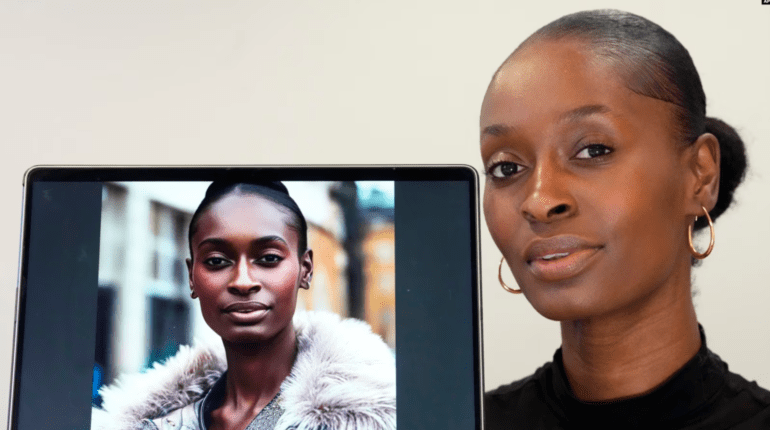- The fashion industry is witnessing a paradigm shift with the integration of Artificial Intelligence (AI) in modeling.
- AI-generated virtual models offer unparalleled versatility, addressing the industry’s longstanding issues of representation and inclusivity.
- However, concerns persist regarding the displacement of human talent and the risk of perpetuating tokenism.
- Initiatives like the Fashion Workers Act in New York aim to regulate AI utilization, safeguarding models’ rights and ensuring ethical AI development.
- Industry pioneers, such as Lalaland.ai, advocate for a conscientious approach, leveraging AI as a complement to traditional photography while championing diversity and reducing product returns.
Main AI News:
The fashion industry stands at the crossroads of innovation and tradition, where the integration of Artificial Intelligence (AI) is reshaping the landscape of modeling. Meet Alexsandrah, a prominent fashion model based in London, who introduces an intriguing concept—her AI twin. This virtual doppelgänger seamlessly steps in when Alexsandrah is unavailable, embodying her likeness and enabling uninterrupted workflow. In this era of digital transformation, such instances highlight the burgeoning influence of computer-generated imagery in creative domains.
Proponents of AI adoption in fashion argue that virtual models offer unparalleled versatility, allowing brands to showcase their apparel on diverse body types and skin tones without logistical constraints. The practicality of this approach becomes evident in addressing the industry’s longstanding criticism of underrepresentation and narrow beauty standards. However, the proliferation of AI models raises pertinent concerns about the displacement of human talent, posing challenges for models, makeup artists, and photographers alike.
The Fashion Industry at a Crossroads: Balancing Innovation with Ethical Imperatives
The debate surrounding AI’s role in fashion underscores broader ethical considerations within the industry. Critics argue that while AI promises inclusivity, it risks perpetuating tokenism by substituting genuine diversity with simulated representations. Sara Ziff, founder of the Model Alliance, elucidates this dichotomy, emphasizing the dissonance between corporate rhetoric and substantive action.
In March 2023, Levi Strauss, a stalwart in the apparel industry, announced its foray into AI-generated modeling to promote size inclusivity. However, amid backlash, the company reaffirmed its commitment to human models, underscoring the imperative of aligning technological advancements with diversity and inclusion objectives. Such incidents underscore the delicate balance between leveraging AI for innovation while upholding ethical standards and industry integrity.
Navigating the Ethical Quagmire: Towards Inclusive Practices and Regulatory Frameworks
As the ethical discourse surrounding AI intensifies, stakeholders grapple with the imperative of ethical AI utilization. Lalaland.ai, a pioneering AI modeling firm founded by Michael Musandu, exemplifies a conscientious approach, prioritizing AI as a complement rather than a substitute for traditional photography. By championing representation and mitigating product returns, Lalaland.ai embodies a progressive paradigm within the industry.
Yet, ethical concerns persist, epitomized by Yve Edmond’s apprehensions regarding the commodification of human images in AI training datasets. Edmond’s experience underscores the need for legislative safeguards to protect models’ rights and ensure equitable compensation for their contributions to AI development. Initiatives like the Fashion Workers Act in New York herald a pivotal step towards regulating AI utilization in the fashion ecosystem, delineating clear guidelines for consent, compensation, and usage rights.
In the pursuit of innovation, the fashion industry stands at a critical juncture, where technological advancement intersects with ethical imperatives. As industry pioneers navigate this landscape, the imperative lies in fostering a symbiotic relationship between AI innovation and ethical integrity, ensuring that the future of fashion remains inclusive, equitable, and morally conscientious.
Conclusion:
The integration of AI in fashion modeling represents a double-edged sword for the market. While offering unprecedented opportunities for inclusivity and efficiency, it also raises ethical concerns regarding human displacement and representation. As stakeholders navigate this landscape, striking a balance between technological innovation and ethical integrity will be pivotal in shaping a more equitable and sustainable future for the fashion industry.

